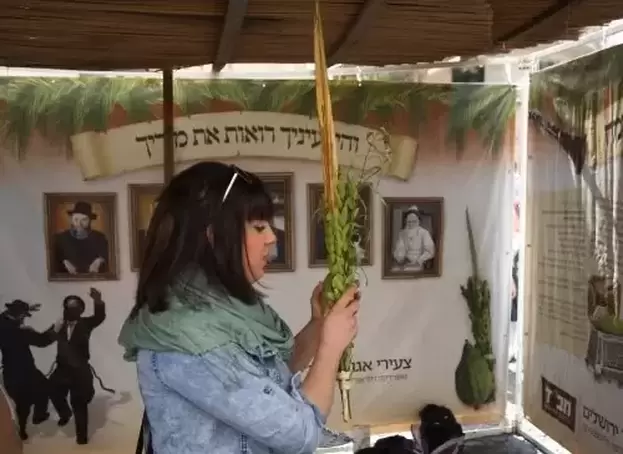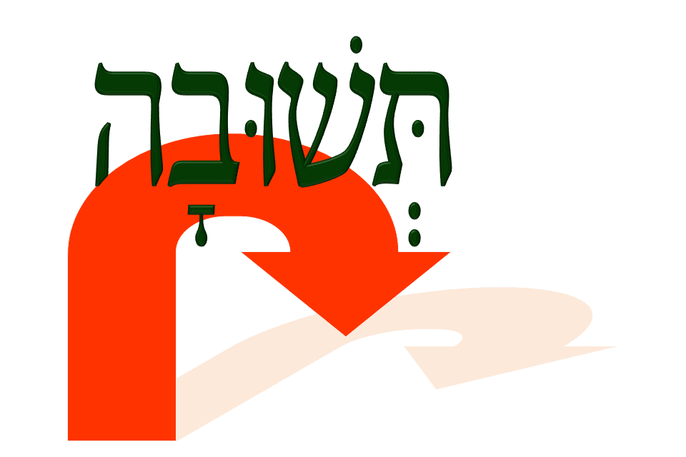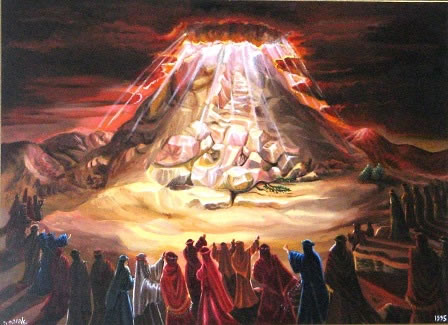 Rabbi David Etengoff Dedicated to the sacred memories of my mother, Miriam Tovah bat Aharon HaKohane, father-in-law, Levi ben Yitzhak, sister, Shulamit bat Menachem, sister-in-law, Ruchama Rivka Sondra bat Yechiel, Chana bat Shmuel, Yehonatan Binyamin ben Mordechai Meir Halevi, Tikvah bat Rivka Perel, Gittel Malka bat Moshe, Alexander Leib ben Benyamin Yosef, the Kedoshim of Har Nof, Pittsburgh, and Jersey City, the refuah shlaimah of Mordechai HaLevi ben Miriam Tovah, and the health and safety of our brothers and sisters in Israel and around the world. The Festival of Succot contains two major mitzvot, dwelling in the Succah on the night of the 15th of Tishrei, and the taking of the Arba’at HaMinim (the Four Species). These acts are in the halachic category of mitzvot aseh sh’hazman grama (time-bound Positive Commandments). Consequently, while women may fulfill these commandments, they are not obligated to do so. This principle is based on the well-known statement of Chazal: “And in all cases of time-bound Positive Commandments, men are obligated, and women are exempt.” (Mishna Kiddushin 1:7) The following midrashic interpretation of the Arba’at HaMinim is particularly intriguing in light of this ruling: “The fruit of a beautiful tree [etrog],” this refers to Sarah, since the Holy One blessed be He honored her (sh’hidrah, literally, beautified her) with good health in her old age. As the text states: “Now Abraham and Sarah were old, coming on in years…” (Sefer Bereishit 18:11) “Date palm fronds [lulav],” this refers to Rivka, for just like a date palm tree has both fruit and thorns, so, too, did Rivka give birth to a tzadik (Ya’akov) and a ra’asha (Eisav). “A branch of a braided tree [hadas],” this refers to Leah, for just like the hadas is filled with leaves, so, too, was Leah [blessed] with many children. “Willows of the brook [arvei nachal],” this refers to Rachel, for just like the arvei nachal wither before the other Arba’at HaMinim, so, too, did Rachel die before her sister [Leah]. (Midrash Vayikra Rabbah, Parashat Emor 30:10, translation and brackets my own) We are immediately struck by the midrash’s choice of the Emahot as metaphorically representing the Arba’at HaMinim. After all, what is their connection since, as we have seen, women are exempt from mitzvot aseh sh’hazman grama? In my view, the midrash followed this approach in order to teach us a crucial lesson: Judaism is comprised of two beautiful and equally vital Massorot (traditions), the Massorah of the Fathers and the Massorah of the Mothers. Therefore, it is fitting and proper to compare the Emahot to the Arba’at HaMinim. In modern times, there was no greater exponent of this approach than my rebbe and mentor, Rabbi Joseph B. Soloveitchik zatzal (1903-1993), known as “the Rav” by his students and followers: People are mistaken in thinking that there is only one Massorah and one Massorah community; the community of the fathers. It is not true. We have two massorot, two traditions, two communities, two shalshalot ha-kabbalah [chains of Tradition]—the massorah community of the fathers and that of the mothers…What kind of a Torah does the mother pass on? I admit that I am not able to define precisely the masoretic role of the Jewish mother. Only by circumscription I hope to be able to explain it. Permit me to draw upon my own experiences. At this point we are privy to the Rav’s deepest personal reminiscences of his beloved mother: I used to have long conversations with my mother. In fact, it was a monologue rather than a dialogue. She talked and I “happened” to overhear. What did she talk about? I must use an halakhic term in order to answer this question: she talked me-inyana de-yoma [about the halakhic aspects of a particular holy day]. I used to watch her arranging the house in honor of a holiday. I used to see her recite prayers; I used to watch her recite the sidra [Torah portion] every Friday night and I still remember the nostalgic tune. I learned from her very much. What was the essence of that which the Rav learned from his mother? What gift did she give him that transformed his perception of the world? As he states in his inimitable manner: Most of all I learned that Judaism expresses itself not only in formal compliance with the law but also in a living experience. She taught me that there is a flavor, a scent and warmth to mitzvot. I learned from her the most important thing in life—to feel the presence of the Almighty and the gentle pressure of His hand resting upon my frail shoulders. Without her teachings, which quite often were transmitted to me in silence, I would have grown up a soulless being, dry and insensitive. (Rabbi Joseph B. Soloveitchik, “A Tribute to the Rebbitzen of Talne,” Tradition: A Journal of Orthodox Jewish Thought, 1978, Vol. 17, number 2, pages 76-77) It is, and perhaps always has been, the unique privilege of Jewish women to enable our people to “… feel the presence of the Almighty and the gentle pressure of His hand resting upon [our] frail shoulders.” Therefore, when we rejoice with the Arba’at HaMinim this Succot, let us remember the Midrash’s essential and powerful message to embrace both the Massorah of the Mothers and the Massorah of the Fathers, so that we may fulfill this mitzvah as a “living experience” in all its “flavor, scent and warmth.” With Hashem’s help, may we be zocheh (merit) to do so. V’chane yihi ratzon. Shabbat Shalom and Chag Sameach! Past drashot may be found at my blog-website: http://reparashathashavuah.org Please contact me at [email protected] to be added to my weekly email list. *** My audio shiurim on the topics of Tefilah and Tanach may be found at: http://tinyurl.com/8hsdpyd *** I have posted 164 of Rabbi Soloveitchik’s English language audio shiurim (MP3 format) spanning the years 1958-1984. Please click on the highlighted link: The Rav
0 Comments
 Rabbi David Etengoff Dedicated to the sacred memories of my mother, Miriam Tovah bat Aharon HaKohane, father-in-law, Levi ben Yitzhak, sister, Shulamit bat Menachem, sister-in-law, Ruchama Rivka Sondra bat Yechiel, Chana bat Shmuel, Yehonatan Binyamin ben Mordechai Meir Halevi, Tikvah bat Rivka Perel, Gittel Malka bat Moshe, Alexander Leib ben Benyamin Yosef, the Kedoshim of Har Nof, Pittsburgh, and Jersey City, the refuah shlaimah of Mordechai HaLevi ben Miriam Tovah, and the health and safety of our brothers and sisters in Israel and around the world. This Sabbath is Shabbat Shuvah, a time when our spiritual efforts are focused upon teshuvah (returning to Hashem). The Rambam’s (1135-1204) Hilchot Teshuvah is one of the most celebrated works on teshuvah. Therein, he notes that teshuvah is comprised of four essential elements: What constitutes teshuvah? A sinner should abandon his sins and remove them from his thoughts, resolving in his heart never to commit them again, as the text states, “May the wicked abandon his ways....” (Sefer Yeshayahu 55:7) Similarly, he must regret the past, as the text states, “After I returned, I regretted.” (Sefer Yirmiyahu 31:18) … [And] he must verbally confess and state these matters which he resolved in his heart. (II:2, translation, Rabbi Eliyahu Touger). In sum, teshuvah consists of four inextricably connected parts: Abandonment of the sin, regret for having performed the prohibition, confession before Hashem, and heartfelt acceptance and determination that he or she will never commit the transgression again. While nearly all classic halachic authorities accept this definitional structure of teshuvah, they differ as to whether or not there is a mitzvah to engage in the teshuvah process. As is well-known, the Rambam does not consider teshuvah a mitzvah, in and of itself, instead, he conceptualizes it as a complement to vidui (confession): The 73rd mitzvah we are commanded is to verbally acknowledge the sins we have committed before Him, exalted be He, when we come to do teshuvah (to repent). This is vidui (verbal confession), the idea of which is to say, “O Hashem, I have sinned, I have committed iniquity, I have transgressed and done ...” (Sefer HaMitzvot, translation, Rabbi Berel Bell) This approach was embraced by a number of illustrious Acharonim (later halachic authorities), including the Avodat HaMelech (1869-1929), the Minchat Chinuch (1800-1874) and Rav Avraham Yitzhak Hakohen Kook (1865-1935), the first Chief Rabbi of Palestine under the British Mandate. In his Commentary on the Torah, the Ramban (1194-1270) champions the contrasting view that teshuvah does, in fact, constitute a mitzvah. His bases this approach on his interpretation of the pasuk: “For this commandment (ki hamitzvah hazot) which I command you this day is not concealed from you, nor is it far away.” (Sefer Devarim 30:11, this and all Tanach translations, The Judaica Press Complete Tanach) In general, Chazal view the phrase, “ki hamitzvah hazot,” as referring to the entire Torah because of its proximity to the expression, “lo bashamayim he” (“it, that is, the Torah, is not in Heaven”), as found in the next verse. The Ramban, however, suggests that this approach is grammatically incorrect, for if “ki hamitzvah hazot” did refer to the totality of the Torah, it should have stated, “kol hamitzvah” (“every commandment”), as we find in the pasuk: “Every commandment (kol hamitzvah) that I command you this day you shall keep to do, that you may live and multiply, and come and possess the land that Hashem swore to your forefathers.” (Sefer Devarim 8:1) Based on this reading, he opines that since the Torah writes, “ki hamitzvah hazot,” it must refer to a single mitzvah, namely, teshuvah: …the expression, “ki hamitzvah hazot,” however, is mentioned in reference to teshuvah, as we find in the [earlier verses of our chapter], “you will consider in your heart (v’hashavota el levavecha) among all the nations where Hashem your G-d has banished you,” (30:1) and you will return to Hashem, your G-d, (v’shavta od Hashem Elokecha) with all your heart and with all your soul (30:2). This [that is, teshuvah,] is the commandment that we are commanded to perform. (Translations, brackets and underlining my own) The single greatest factor militating against the Ramban’s view that teshuvah constitutes a mitzvah is the manner in which teshuvah is presented in these verses. Normally, a commandment is stated in an imperative construct. For example, in reference to Yom Kippur we find: “It is a Shabbat of rest for you, and you shall afflict yourselves. It is an eternal statute.” (Sefer Vayikra 16:31) In our verses, however, teshuvah is presented in a narrative format lacking any mandated action. This challenge, however, does not deter the Ramban from maintaining the mitzvah-status of teshuvah, as he suggests that this mode of presentation gives powerful voice to Hashem’s promise that nothing stands in the way of teshuvah, and that in the future, the entire nation will return to Him: And this [mitzvah of teshuvah was stated] in a narrative formulation to hint at the fulfillment of the promise that in the future the matter will be so [that is, the Jewish people will universally undertake the teshuvah process]. The underlying reason for this is to inform us that even if we are scattered about to the very ends of Heaven, and we are under the hegemony of the non-Jews, we will be able to return to Hashem and fulfill all of the mitzvot that “I command you this day.” For the matter of doing teshuvah is not beyond us or distant from us, rather it is very close to us indeed—and we may begin the teshuvah process at any time and in any place… My rebbe and mentor, Rabbi Joseph B. Soloveitchik zatzal (1903-1993), known as “the Rav” by his students and followers, was very fond of the Ramban’s theological positions. Little wonder, then, that he often stresses the idea found in Tachanun that Hashem is the pota’ach yad b’teshuvah (the Holy One blessed be He continuously reaches out to us with the promise of teshuvah). Like the Ramban, the Rav emphasizes that “we may begin the teshuvah process at any time and in any place…” May the time come soon and, in our days, when the Jewish people will join together as one, and return to Hashem in heartfelt teshuvah. V’chane yihi ratzon. Shabbat Shalom and G’mar Chatimah Tovah Past drashot may be found at my blog-website: http://reparashathashavuah.org. Please contact me at [email protected] to be added to my weekly email list. *** My audio shiurim on the topics of Tefilah and Tanach may be found at: http://tinyurl.com/8hsdpyd *** I have posted 164 of Rabbi Soloveitchik’s English language audio shiurim (MP3 format) spanning the years 1958-1984. Please click on the highlighted link: The Rav  Rabbi David Etengoff Dedicated to the sacred memories of my mother, Miriam Tovah bat Aharon HaKohane, father-in-law, Levi ben Yitzhak, sister, Shulamit bat Menachem, sister-in-law, Ruchama Rivka Sondra bat Yechiel, Chana bat Shmuel, Yehonatan Binyamin ben Mordechai Meir Halevi, Tikvah bat Rivka Perel, Gittel Malka bat Moshe, Alexander Leib ben Benyamin Yosef, the Kedoshim of Har Nof, Pittsburgh, and Jersey City, the refuah shlaimah of Mordechai HaLevi ben Miriam Tovah, and the health and safety of our brothers and sisters in Israel and around the world. This is the time of year when our friends ask: “How are you? Are you ready for another Rosh HaShanah? Can you believe its Rosh HaShanah again?” These, and similar kinds of questions are “on the mark,” and exactly where our thoughts should be. In truth, “How are you?” can be taken either as another blasé social pleasantry—or something far more. In my estimation, we can view it as a modern-day restatement of Hashem’s question to Adam after he violated the one mitzvah that Hashem gave him, namely, the prohibition of eating from the pri eitz hada’at (Tree of Knowledge): “And the woman saw that the tree was good for food and that it was a delight to the eyes, and the tree was desirable to make one wise; so she took of its fruit, and she ate, and she gave also to her husband with her, and he ate.” (Sefer Bereishit 3:6, translation, The Judaica Press Complete Tanach) This, in turn, led the Almighty to ask: “Where are you?” (3:9) An odd question by all accounts, since Hashem knew full well where Adam and Chava were located, as such, what was the Holy One Blessed be He really asking? I believe Hashem was asking an existential question, or perhaps, the existential question: “Now that you have sinned against Me, what is your place within the great scheme of Creation? What is your value to the world now that you have torn our covenant asunder?” In short, Hashem was asking some of the very same things we should be asking ourselves in preparation for Rosh HaShanah. These types of questions should motivate us to pause and reflect upon our past actions and spur us on to depth-level change. Moreover, they should lead to the logical conclusion that it is time to do teshuvah. The Rambam (1135-1204) defines teshuvah in this manner: What exactly is teshuvah? [It is the act that demands] the sinner to reject his sin, remove it from his thoughts, and determine in his mind that he will never do it again...So, too, he must feel badly for what he has done in the past...and he must bear testimony to He who knows all secret matters that he will never repeat this sin again... In addition, he must verbally confess [his sin] and speak aloud of those things he has determined in his mind. (Mishneh Torah, Hilchot Teshuvah 2:2) In sum, the teshuvah process is comprised of:
Authentic teshuvah, therefore, is a holistic process that involves the individual’s entire being. It incorporates a radical shift in the mindset of one who has gone astray so that they will be able to return to the proper path of Torah observance. It requires unflinching honesty and the will to reject rationalizations for our sins. In addition, the ba’al teshuvah (master of teshuvah) needs to feel badly about what he or she has done, reject their prior action, and resolve never to repeat this deed in the future. Lastly, all of this must be accompanied by a heart-felt oral confession before Hashem of what they have done. It stands to reason that the more pronounced a particular sin has become within a person’s repertoire of behaviors, the greater degree of difficulty they will encounter in trying to free themselves from its powerful grip. This is why tefilat tachanun that we recite on Mondays and Thursdays contains the hopeful phrase: “hapoteiach yad b’teshuvah l’kabale poshayim v’chataim—You Who opens a hand for repentance, to welcome rebels and sinners...” (Translation, The Complete ArtScroll Siddur, page 130) In other words, Avinu Malkeinu is at one and the same time, Av HaRachamim, and stands ready to receive our heartfelt teshuvah, in love and divine mercy. Perhaps, most of all, we are not alone in this endeavor, as Yirmiyahu the prophet declared so long ago: “Hashiveinu Hashem alecha v’nashuvah, chadeish yameinu k’kedem—Enable us Hashem to return in teshuvah unto You, and we will return, renew our days [with You] as they were in earlier times.” (Megillat Eicah 5:21, translation, my own) May this time come soon, and in our days. V’chane yihi ratzon. Kativah v’Chatimah Tovah and Shabbat Shalom Past drashot may be found at my blog-website: http://reparashathashavuah.org. Please contact me at [email protected] to be added to my weekly email list. *** My audio shiurim on the topics of Tefilah and Tanach may be found at: http://tinyurl.com/8hsdpyd *** I have posted 164 of Rabbi Soloveitchik’s English language audio shiurim (MP3 format) spanning the years 1958-1984. Please click on the highlighted link: The Rav  Rabbi David Etengoff Dedicated to the sacred memories of my mother, Miriam Tovah bat Aharon HaKohane, father-in-law, Levi ben Yitzhak, sister, Shulamit bat Menachem, sister-in-law, Ruchama Rivka Sondra bat Yechiel, Chana bat Shmuel, Yehonatan Binyamin ben Mordechai Meir Halevi, Tikvah bat Rivka Perel, Gittel Malka bat Moshe, Alexander Leib ben Benyamin Yosef, the Kedoshim of Har Nof, Pittsburgh, and Jersey City, the refuah shlaimah of Mordechai HaLevi ben Miriam Tovah, and the health and safety of our brothers and sisters in Israel and around the world. This Motzai Shabbat we begin the recitation of Selichot in order to prepare ourselves to meet the Master of the Universe on Rosh Hashanah. As such, it is no mere metaphor that the initial pasukim of our parshiot state: You are all standing this day (atem nitzavim hayom) before Hashem, your G-d, the leaders of your tribes, your elders and your officers, every man of Israel, your young children, your women, and your convert who is within your camp both your woodcutters and your water drawers, that you may enter the covenant of Hashem, your G-d, and His oath, which Hashem, your G-d, is making with you this day. (Sefer Devarim 29:9-11, this, and all Tanach translations, The Judaica Press Complete Tanach) As we can readily see, the statement, “You are all standing this day,” is written as “atem nitzavim hayom,” instead of the standard “atem omdim hayom.” This unusual word choice becomes clearer when we examine two instances of the word “n’tziv” (“standing,” and its variants) that appear in Sefer Bereishit. The first concerns Lot and his wife. They are warned not to look behind themselves so as not to behold the destruction that will befall S’dom and Gomorrah (Sefer Bereishit 19:17). Instead of listening to the words of the malach, Lot’s wife casts a furtive glance behind her and is turned into a pillar of salt—a n’tziv melech (19:26). A n’tziv is something permanent and unmoving. It is fixed in place and will remain there forever. Lot’s wife’s transformation from a living and breathing person into a silent pillar of salt is a permanent reminder of her failure to heed the words of the Creator. The second instance of the verb “n’tziv” occurs when Avraham’s servant, Eliezer, is waiting by the well and prays to Hashem to reveal the identity of Yitzchak’s future wife to him. The Torah uses the expression, “Henah anochi nitzav al ain hamayim...Behold I am standing at the well,” (24:13). Here, too, why doesn’t Eliezer simply say: “Henah anochi omed al ain hamayim?” Why does he employ the uncommon verb “nitzav?” I believe that he uses this word to teach us a crucial lesson regarding the nature of emunah. In my estimation, he is publicly proclaiming his loyalty to his master Avraham, and, ultimately, to the Ribono shel Olam (the Master of the Universe). Eliezer had taken a shavuah (oath) that he would expend every possible effort to find Yitzhak a bride from Avraham’s country of origin. Therefore, he did his utmost to fulfill that shavuah and would not be moved right or left for any reason. He had one course and one course only: nitzav—to stand and wait patiently for Hashem's divine revelation to unfold. Thus, like Lot’s wife, he was standing in place, albeit, based upon an entirely different reason. I believe this is why “nitzav,” rather than the common verb “omed,” is used. We can now view the phrase, “atem nitzavim hayom,” as imparting an essential message: No matter how powerful and persuasive certain cultural norms and ideas may be, if they are opposed to the essence of the Torah and Halacha and represent the antithesis of our being an am kodesh (a holy nation) and the am segulah (the Chosen People), then: “atem nitzavim hayom!” In short, no force on earth should ever move us from being nitzavim of emunah (pillars of faith) in the house of Hashem. As Dovid HaMelech said so long-ago: “Achat sha’alti m’ate Hashem oto avekash shivti b'beit Hashem kol yimei chayai...One [thing] I ask of Hashem, that I seek—that I may dwell in the house of Hashem all the days of my life...” (Sefer Tehillim 27:4) This, then, is the goal of our people—to ever be “nitzavim hayom” (standing today), machar (tomorrow) and l’atid lavo (forever more) before Hashem. V’chane yihi ratzon. Shabbat Shalom and Kativah v’chatimah tovah! Past drashot may be found at my blog-website: http://reparashathashavuah.org. Please contact me at [email protected] to be added to my weekly email list. *** My audio shiurim on the topics of Tefilah and Tanach may be found at: http://tinyurl.com/8hsdpyd *** I have posted 164 of Rabbi Soloveitchik’s English language audio shiurim (MP3 format) spanning the years 1958-1984. Please click on the highlighted link: The Rav |
Details
Archives
July 2024
AuthorTalmid of Rabbi Soloveitchik zatzal Categories |
- Blog: Rabbi David Etengoff: Parashat HaShavuah
- Sefer Bereishit 5784&5785
- Sefer Shemot 5784&5785
- Sefer Vayikra 5784&5785
- Sefer Bamidbar 5784 &5785
- Sefer Bereishit 5782&5783
- Sefer Shemot 5782&5783
- Sefer Vayikra 5782&5783
- Sefer Bamidbar 5782&5783
- Sefer Devarim 5782&5783
- Sefer Bereishit 5780& 5781
- Sefer Shemot 5780&5781
- Sefer Vayikra 5780&5781
- Sefer Bamidbar 578&5781
- Sefer Devarim 578&5781
- Sefer Bereishit 5778&5779
- Sefer Shemot 5778&5779
- Sefer Vayikra 5778&5779
- Sefer Bamidbar 5778&5779
- Sefer Devarim 5778&5779
- Sefer Bereishit 5776&5777
- Sefer Bereishit 5774&5775
- Sefer Bereishit 5772&5773
- Sefer Bereishit 5771&5770
- Sefer Shemot 5776&5777
- Sefer Shemot 5774&5775
- Sefer Shemot 5772&5773
- Sefer Shemot 5771&5770
- Sefer Vayikra 5776&5777
- Sefer Vayikra 5774&5775
- Sefer Vayikra 5772&5773
- Sefer Vayikra 5771&5770
- Sefer Bamidbar 5776&5777
- Sefer Bamidbar 5774&5775
- Sefer Bamidbar 5772&5773
- Sefer Bamidbar 5771&5770
- Sefer Devarim 5776&5777
- Sefer Devarim 5774&5775
- Sefer Devarim 5772&5773
- Sefer Devarim 5771&5770
 RSS Feed
RSS Feed
